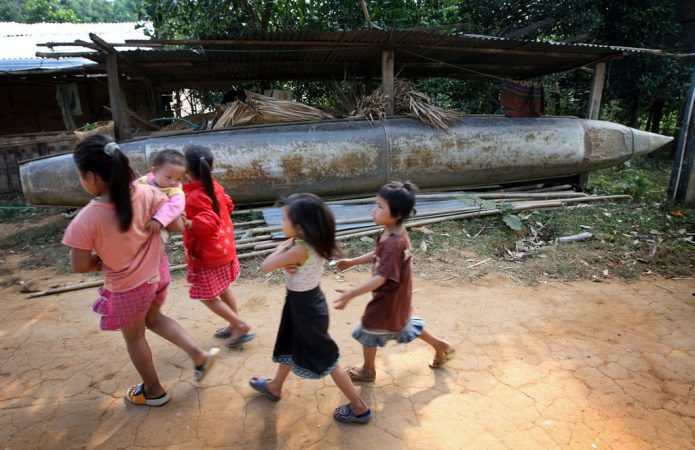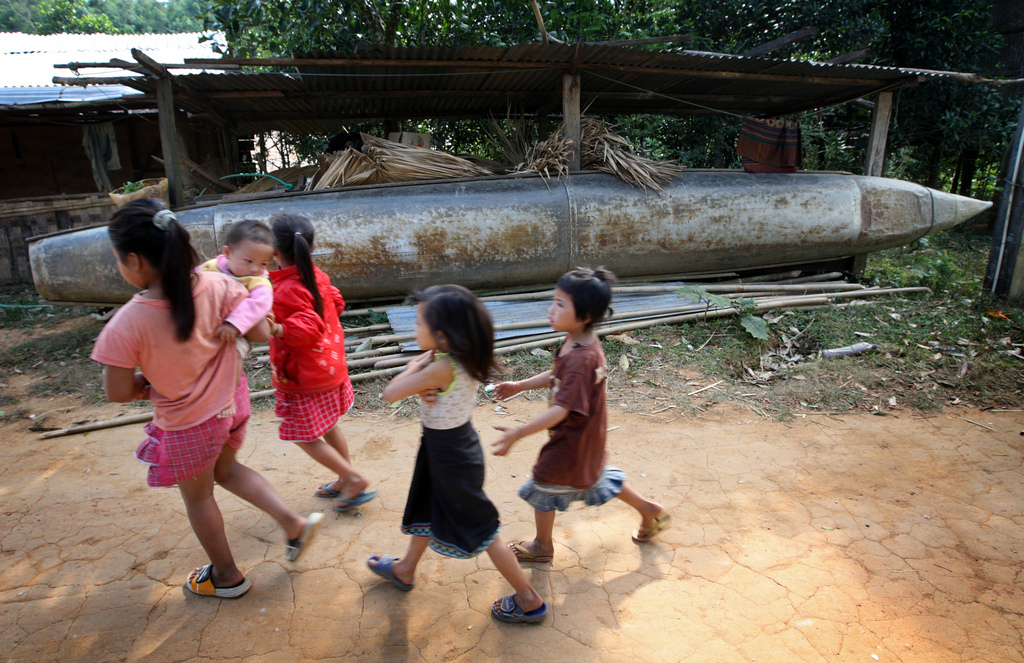
(Photo: Cluster Munition Coalition / Flickr)
Fifty-two years ago, the United States began the secret bombing of Laos, a tiny country whose only crime was geographical. It bordered Vietnam, and the US military wanted to stop the movement of Vietnamese soldiers and supplies through Laos.
Out of the sight of Americans, Laos became the most heavily bombed country per capita in the history of warfare.
A surprising number of the bombs—about 30 percent—never exploded, and they are still killing and maiming Laotian farmers today. But, thanks to the work of a committed group of modern-day heroes, led by a young Laotian-American, President Obama just announced that the United States will devote $90 million over the next three years to finding and disposing of those remaining bombs.
I learned about the secret bombing of Laos during two stints as an intern in Washington at the Indochina Resource Center. The Center was started by Fred Branfman, who had been a volunteer in Laos during the bombing, and it became a key resource center of the anti-war movement. In the Plain of Jars area where Fred was stationed, every single person of the roughly 50,000 who lived there in 1964 was either killed by the bombs or turned into a refugee. Fred went to the refugee camps in 1970 and urged people to draw pictures of the bombing and write down their stories. He published these drawings and stories in the book Voices from the Plain of Jars in 1972 and returned to Washington to tell the story that no D.C. official wanted to hear.
…
